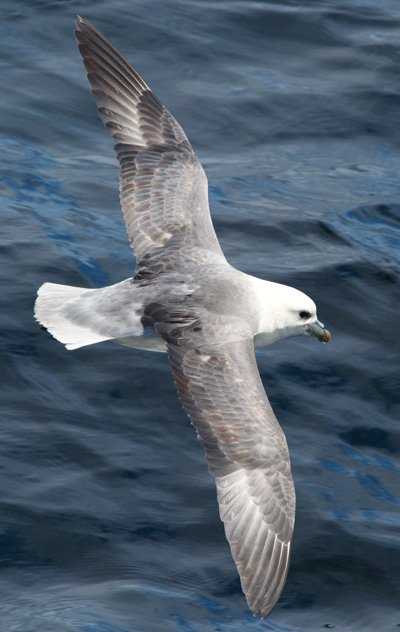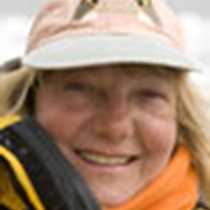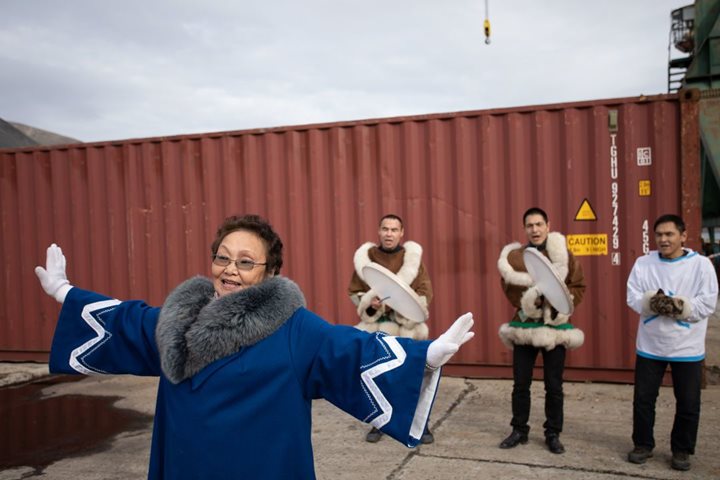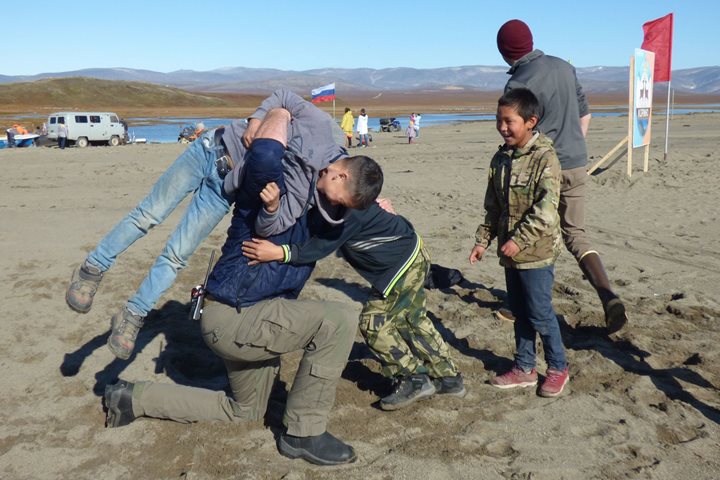One would think that a day at sea would be a leisurely event. However, on an expedition voyage of this nature, our day would be filled with attending informational lectures, downloading and arranging our photographic records, studying our notes, and updating our species checklist among other endeavors. Although the skies were overcast, our visibility was a good couple of miles allowing us to scan the seas for whales and the skies for seabirds.
Throughout the journey we have been escorted by aerial formations of thousands of seabirds – busily flying towards feeding grounds or back to their nests to feed their youngsters perhaps their last meal before the chicks fledged and fended for themselves. Some species are long-distance migrants which pay a short visit here from the southern hemisphere during their nonbreeding period.
In recent days we have seen tens of thousands of short-tailed shearwaters. These nest in the Australasian region but make a staggering 160,000-mile figure-eight-pathed journey to the North Pacific each year. Much rarer have been our sightings of mottled petrel which breed mostly at Codfish Island off New Zealand’s South Island. This species visits the rich feeding grounds of the Bering Sea each Austral winter. Other species, amongst others that we have recorded, have been black-legged kittiwakes, Pacific fulmar, and Vega gull.
National Geographic photographer Chris Rainier started off the day’s lecture series with an account of the indigenous peoples of this area and elsewhere, stressing the fact that we live in a critical time for the survival of unique cultures. Chris’s photographs are truly exceptional, and we felt privileged to be part of his audience. Following a tea and coffee break we returned to the lounge where Chris and staff photographer Eric Guth shared with us information on how to make more of our iPhone photography.
The distance from Koluchin Island, where we were yesterday, to Wrangell Island, is 244 nautical miles. Located in the Arctic Ocean between the East Siberian and Chukchi Seas, Wrangel is often referred to as the “Island of Blizzards.” A wild and undeveloped island, largely untouched by glaciers during the last Ice Age, Wrangel looks much as it did in the Pleistocene epoch when wooly mammoths roamed here.
Wrangell and nearby Herald Island make up the “Wrangel island Nature Reserve.” Established in 1976, the reserve set out to protect its colonies of snow geese, polar bear, and walrus. In the wake of securing protection, millions of birds, endemic plants, and fish stocks also benefited.
To help us understand more about the special wildlife of the area, our afternoon lectures concentrated on the fauna, specifically birds and marine mammals. We were fortunate to have the world’s leading seabird expert Peter Harrison onboard. In Peter’s lecture, we learned about puffins and other alcids, discovering that 22 of the 25 species of alcids occur in the North Pacific. Mike Boyce, who hails from Anchorage, Alaska, shared information on some of the marine mammals, mainly whales and seals, which we are likely to see on this voyage.
It was late afternoon when the draping skyline of Wrangel appeared on the horizon. We were fortunate in that the steady rain had given way to light overcast skies. We were here! We had arrived at a destination which not the ship, not the officers, nor any of the guests had ever visited. Indeed, only a handful of the staff plus our Russian guides have been here since Russia first opened the island, on a limited basis, to visitors such as ourselves.
National Geographic Orion anchored in the calm and protected Krasin Bay. Soon after, our Expedition Leader Jimmy White returned from the station with three Russian rangers who would sail with us over our next few days of exploration on Wrangel. The rangers would counsel and guide us as they kept watch for bears – polar bears. Certainly, exciting days were ahead of us.







